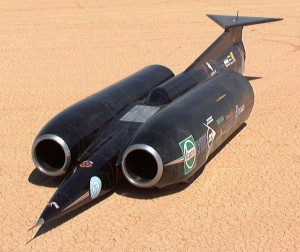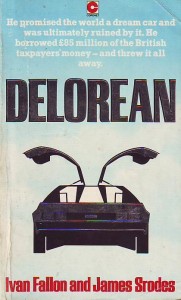Four weeks in Germany
So as I write this, I am just back from our four-week trip to Germany.
It was a trip made with the express intention of seeing as many fabulous technical, automotive and aeronautical sights as possible, and also seeing as many 1930s and 1940s historic sites as possible!
The trip was fascinating – and often rather surprising.
The revered Porsche museum is a self-indulgent wank, with history airbrushed and obfuscated to suit only Porsche and its created mystique.
The BMW museum is in the same mould: brush any commercial difficulties aside (the unsuccessful ETA engines? Never heard of them!) and just plonk cars into a space with almost zero context.
The Mercedes museum? Oh my gosh – what a stunner. Fabulous cars, lots of honesty, and lots of and lots of automotive history expressed in a cultural and technological context. The Mercedes museum is surely one of the best one-make car museums in the world – and boy, do they ever show BMW and Porsche how it should be done.
Another fantastic place to visit is the Sinsheim technic museum. It’s got cars (try some stuff like a Cord, lots of Bugattis, lots and lots of 1930s Mercedes, 1950s bubble cars, American cars of the 1960s – and on and on) and some aircraft (try a Concorde and Soviet-era Tupolev Tu-144) – and also a whole bunch of military hardware.
Travelling as we did in winter, there’s barely a soul to be seen – so you can take your time, completely unhindered by others. It was so quiet that when looking at the outside military hardware at the Sinsheim museum, a friendly stray cat came up to visit!
Another absolute stunner is the Deutsches technical museum in Munich. I thought that the Science Museum we visited in London last year was good but the Deutsches is in another – even better – league. I defy anyone reading this to get through the content of the Deutsches technical museum in less than a full day. From the pile of Mercedes alloy V12 engine blocks in the section on metal casting, to the aeronautical display showing early aircraft wing sections as they were measured in contemporary wind tunnels, to the display on locks and keys, to the room full of machine tools of the 1800s and 1900s, to the full size stationary steam engines, the cutaway submarine (yep a real one) – it just went on and on and on.
And then when you’ve overloaded there, go to the specialised transport Deutsches museum, also in Munich….. that is also outstanding.
But we didn’t just go to museums. Going with my wife and 9-year-old son, we also visited the Lego Discovery centre in Berlin (pretty weak I thought), the Miniature Wonderland in Hamburg (the world’s largest model railway and quite fantastic), lots and lots of shops, went for ferry ride on Lake Constance in the south – and also stayed at Zinnowitz on the Baltic Sea in the north.
Then there were the incredibly sobering Nazi-era concentration camps at Dachau and Mittelbau-Dora, the amazing architecture and feel of the Nuremberg Nazi party rally grounds – and a bunch of other stuff.
I’ll be covering a lot of it – with a huge number of pics – in a Germany Diary series we’ll be shortly running in AutoSpeed.

 Julian Edgar, 50, has been writing about car modification and automotive technology for nearly 25 years. He has owned cars with two, three, four, five, six and eight cylinders; single turbo, twin turbo, supercharged, diesel and hybrid electric drivelines. He lists his transport interests as turbocharging, aerodynamics, suspension design and human-powered vehicles.
Julian Edgar, 50, has been writing about car modification and automotive technology for nearly 25 years. He has owned cars with two, three, four, five, six and eight cylinders; single turbo, twin turbo, supercharged, diesel and hybrid electric drivelines. He lists his transport interests as turbocharging, aerodynamics, suspension design and human-powered vehicles.


